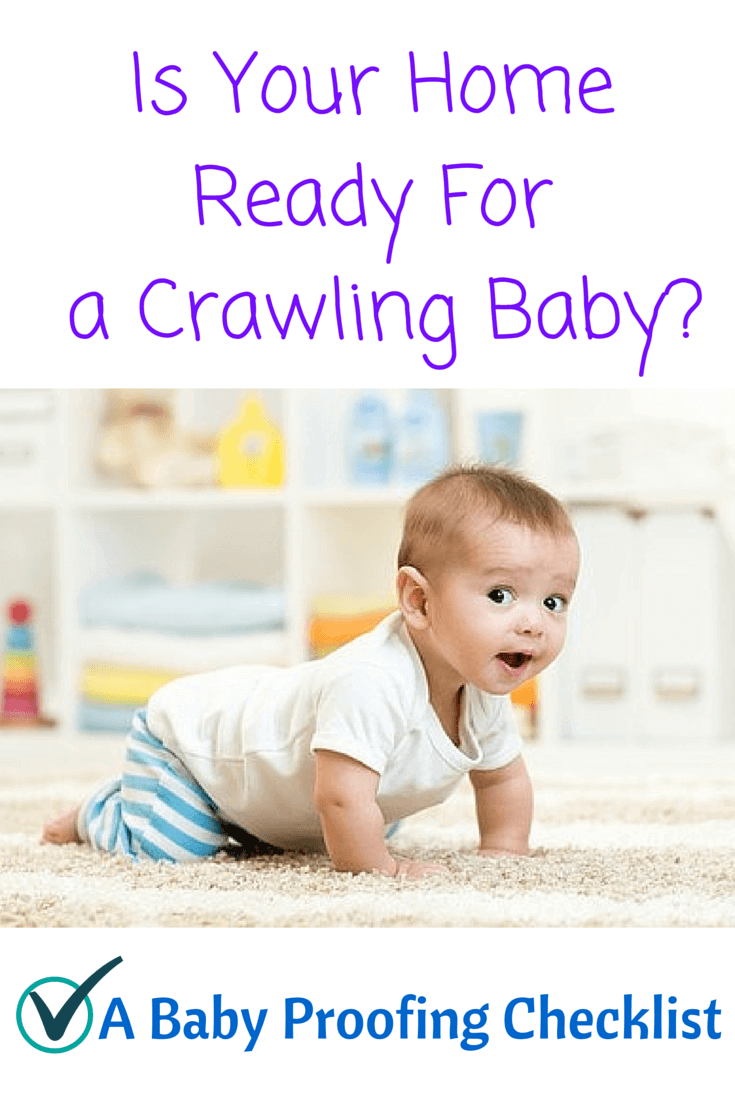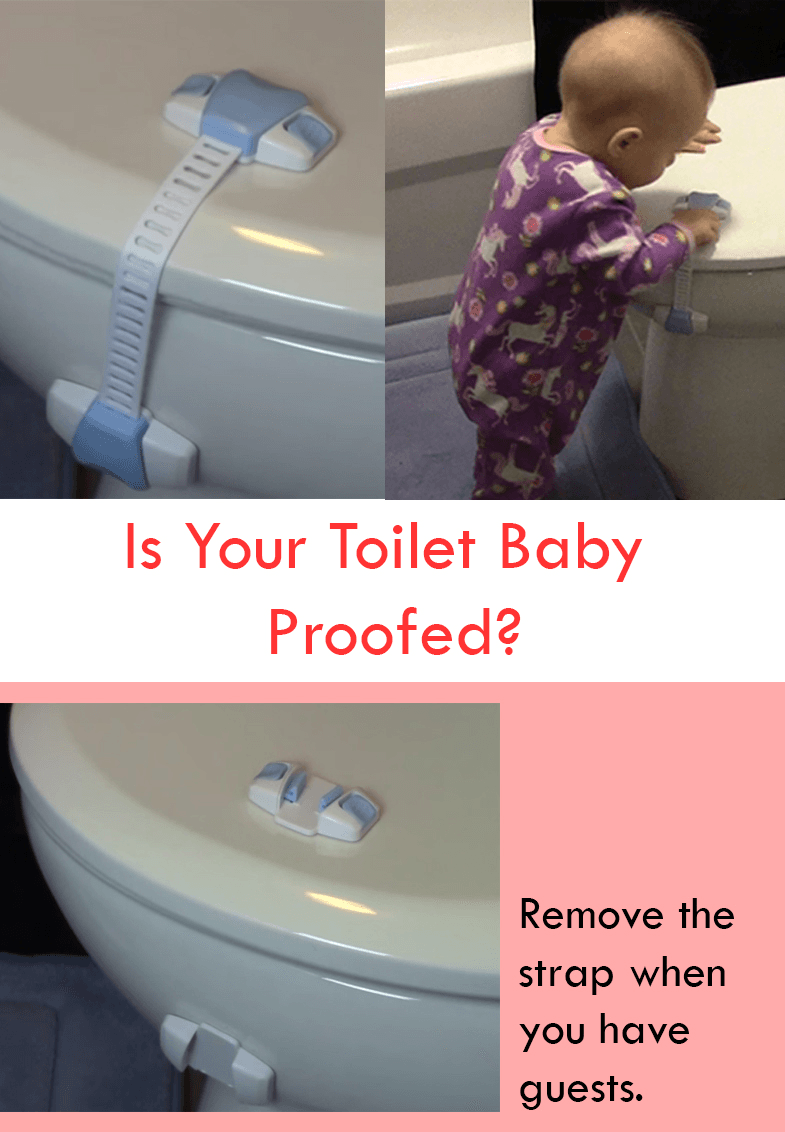
Most babies start crawling around 6 to 9 months old. But it is probably too late to only start baby proofing when they start crawling.
There’s a high chance you end up feeling panicky and stressed out as there’ll be an overwhelming amount of things to do. A good time to start baby proofing is when your baby is able to sit up by himself/herself. With their new found mobility, the crawling baby is venturing into a new world filled with potential dangers.
And mind you, not only will they explore every possible corners of the house, they will soon begin pulling things out. It is impossible to keep an eye on your baby 100% of the time, neither do we want to leave anything to chance.
Hence, it is necessary to take active steps to make sure that the home remains a safe haven for the little one.
3 TIPS To Get You Started On Baby Proofing:
- Get onto your fours and crawl around your house to see things from the perspective of your little crawler. This is the best way to see all the sharp corners, potential dangers and any dangerous temptations that can be reached from their height.
- All sharp corners need to be cushioned. Breakable/sharp/heavy items and chemicals should be removed and placed inside cabinets/drawers or at higher shelves so that they are beyond the baby’s reach. Anything that can be pulled over needs to be removed or securely fastened.
- Items that are too small need to be removed as babies tend to put almost everything they can lay their hands on into their mouth. Anything that can be passed through a toilet paper roll should be considered as a choking hazard.
Here’s A Baby Proofing Checklist…
Throughout The House
- Move dangerous items/chemicals/medicine out of the baby’s reach. Keep them in cabinets/drawers, preferably at heights well above the baby’s reach.
- Install safety locks for cabinets/drawers within the child’s reach as your curious little one will undoubtedly be opening the cabinets/drawers and pulling the contents out.
- Dresser drawers should be secured with child proofing safety locks to prevent toppling due to either toddlers climbing open dresser drawers or them emptying the lower drawers.
- Put a safety latch over the trashcans if the covers are not lockable.
- Televisions/Book shelves/Heavy furniture should be securely fastened with safety straps to the wall to prevent tipping
- Beware of tall and wobbly items like lamps as they can be knocked over easily. If possible, do not use them or place them behind other furniture.
- Baby gates are a MUST at the top and bottom of every flight of stairs. Certain areas like the kitchen, craft room and bathroom should also be cordoned off so that the little one do not explore these danger zones without adult supervision. TIP: Select the wall-mounted gates over pressure-mounted designs.
- Do not leave any bucket of water in the presence of the child.
- Make sure that your pet’s food and water are kept out of the baby's reach.
- Place non-slip mats under rugs.
- Block access to all heaters, radiators and fireplace.
Electrical
- Cover electrical outlets using safety plug covers or outlet box covers. When selecting from the various designs, beware of using small plastic plugs as they may pose as choking hazards.
- Hide electrical cords behind furniture/under carpets or use a cord cover as the long wires could be a tripping or strangulation hazard.
- Unplug all electrical appliances (such as blow dryers) when not in use and keep them out of reach.
Doors
- Make use of door stops or door holders to avoid pinched fingers.
- Stick colorful stickers on sliding glass doors and any large panels of glass. Stick them at the baby’s eye level so that they do not crawl into the glass.
Windows
- Cut off or tie up dangling window-blind cords using blind cleats, as they pose a strangulation risk.
- Keep your baby away from open windows.
- Install window guards, window stops/wedges or safety nettings on windows.

Bathroom
- Medicine cabinet needs to be securely latched.
- Place soft covers on the bath spout and knobs.
- Place non-slip mats inside the bathtub and beside it to avoid falls.
- Install safety latches on toilets.
- When bathing, fill the tub with only 2-3 inches of water, just sufficient to cover the baby’s legs. You can also consider getting a bathtub ring for the baby to sit in. Make sure the water is warm (96-100 degrees Fahrenheit), not hot. You can do a wrist test or use a thermometer.
Kitchen:
Nursery:
- Do not use drop-side cribs as there has been many cases of injuries and even deaths due to malfunctions of the crib design. Use fixed sides crib designs instead.
- The crib slats should not be more than 2 3/8 inches apart so that the baby doesn’t get his head caught between them.
- When the baby is able to get up on his fours, remove mobiles and toys that are hanging above the crib.
- Place the crib away from anything that can be pulled or used by the baby to climb.
- As the baby grows taller, lower the mattress pad so that the baby do not tumble out of the crib nor climb out.
- Stuffed toys, pillows and bumpers should not be in the crib as they are a suffocation risk.
Finally, the installation of baby proofing devices are meant to help but they are NOT a substitute to adult supervision. Moreover, baby proofing should be accompanied by discipline.
Even though you may think that your child is too young to understand what you say right now, you should use phrases such as “no”, “danger” or “mummy’s stuff” when steering them away from potential harm.
With consistency, they will slowly grasp the meaning.
